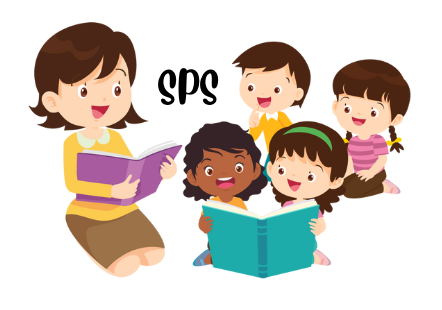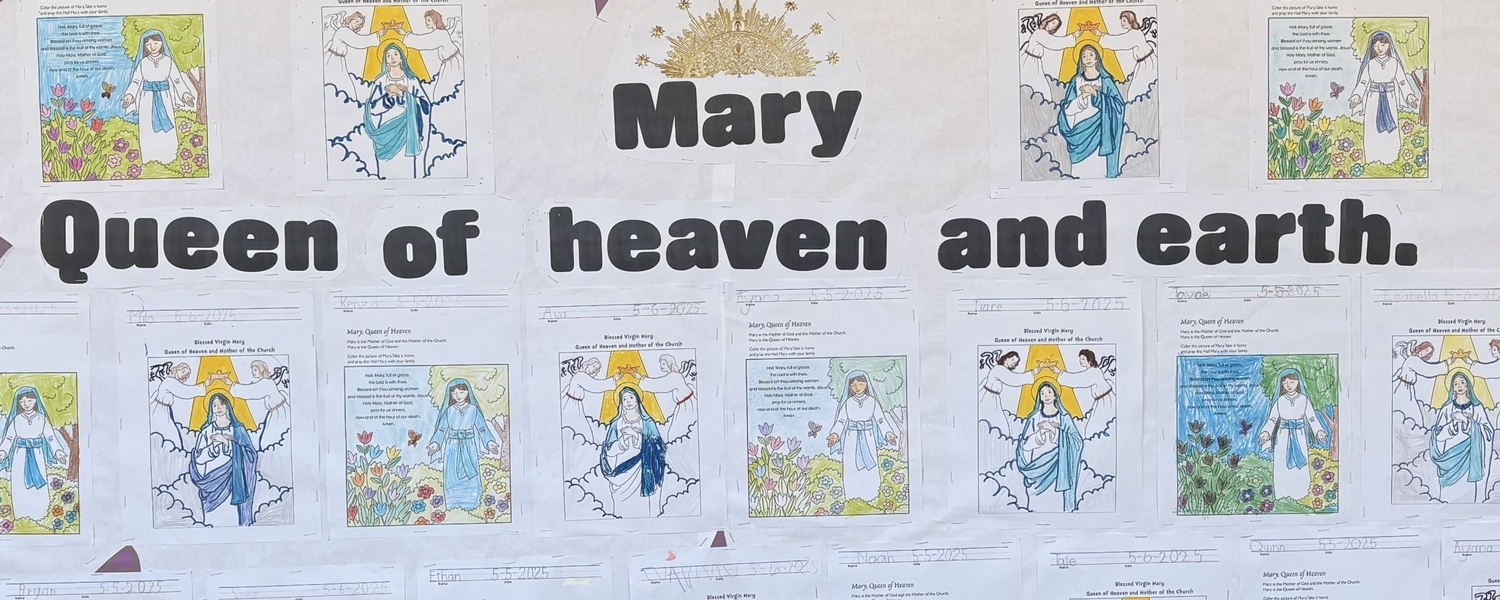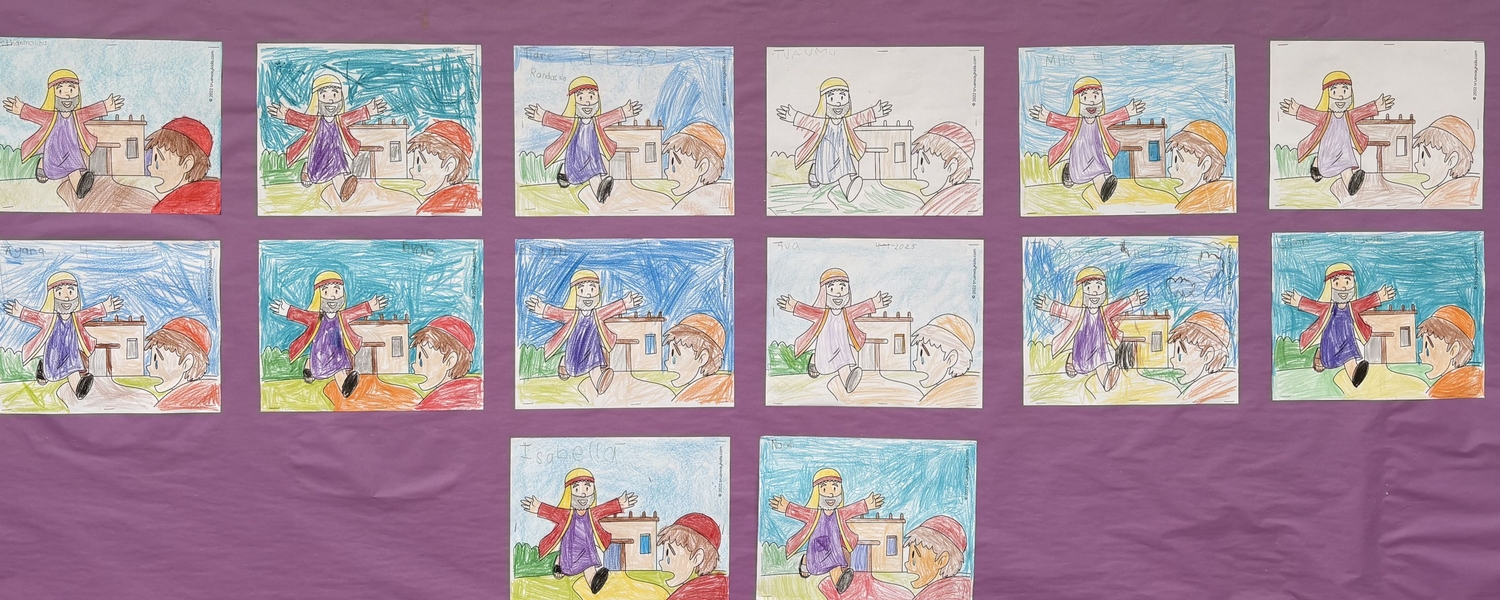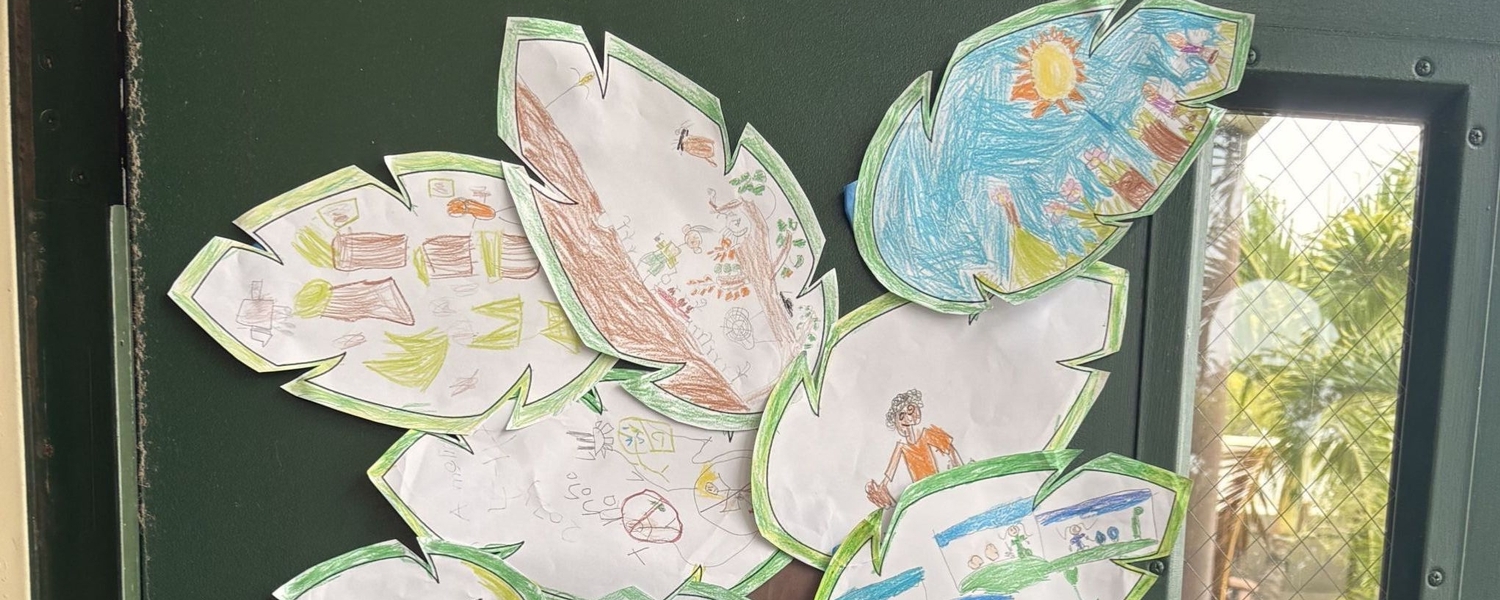/logo.png)
KINDERGARTEN
From the right, it is Jesus in jail, the middle is Jesus on the cross and the left is the tomb where Jesus was buried. I just thought it was a great interpretation of what happened to Jesus.
by Elsie.
.jpeg)
Kindergarten

Religion: As a Catholic school, students will catechism of the Catholic Church by developing compassion and forgiveness by following the examples of Jesus and Mary and incorporating faith as a central role in our students’ daily lives. Through weekly mass, prayer services, Rosary, Adoration and daily prayers, religious education, and service projects, Kindergarteners deepen their relationship with God and learn the values of compassion, respect, and service to others.
Print Concepts: Demonstrate understanding of the organization and basic features of print. Follow words from left to right, top to bottom, and page by page. Students will recognize that spoken words are represented in written language by specific sequences of letters, understand that words are separated by spaces in print, and recognize and name all upper- and lowercase letters of the alphabet. Students will demonstrate understanding of spoken words, syllables, and sounds (phonemes) by recognizing and producing rhyming words; counting, pronouncing, blend, and segment syllables in spoken words. Blend and segment onsets and rimes of single-syllable spoken words by isolating and pronouncing the initial, medial vowel, and final sounds (phonemes) in three-phoneme (consonant-vowel-consonant, or CVC) words. Students apply grade-level phonics and word analysis skills by decoding words. Demonstrate basic knowledge of letter-sound correspondences by producing the primary or most frequent sound for each consonant and recognizing the long and short sounds with the common spellings (graphemes) for the five major vowels and reading common high-frequency words by sight. (e.g., the, if, to, you, she. my, is, are. do, does) and distinguishing between similarly spelled words by identifying the sounds of the words that differ.
Language Arts, phonics and word recognition: Students develop essential literacy skills to support lifelong learning with a focus on Phonics Plus, Spalding Phonics, grammar and sentence structure, spelling and handwriting. Students demonstrate an understanding of the organization and basic features of print by following words from left to right, top to bottom, and page by page, and recognizing that spoken words are represented in written language by specific sequences of letters. Students will recognize and name all upper- and lower-case letters along with phonological awareness that words are separated by spaces in print.
Math: Students will complete operations such as multi-digit multiplication and division, fractions, decimals, geometry, and volume. They will gain a deeper understanding of mathematical concepts that will set them up for success in the years ahead. Count to 100 by ones and by tens. Write numbers from 0 to 20. Represent a number of objects with a written numeral 0-20 (with 0 representing a count of no objects). Understand the relationship between numbers and quantities; connect counting to cardinality. Identify whether the number of objects in one group is greater than, less than, or equal to the number of objects in another group, e.g., by using matching and counting strategies. (Include groups with up to ten objects.) Compare two numbers between 1 and 10 presented as written numerals. Solve addition and subtraction word problems, and add and subtract within 10, e.g., by using objects or drawings to represent the problem. Decompose numbers less than or equal to 10 into pairs. Compose and decompose numbers from 11 to 20 into ten ones. Directly compare two objects with a measurable attribute in common, to see which object has “more of”/”less of” the attribute, and describe the difference. For example, directly compare the heights of two children and describe one child as taller/shorter. Describe objects in the environment using names of shapes, and describe the relative positions of these objects using terms such as above, below, beside, in front of, behind, and next to.
Social Studies: Students explore key American historical events, cultural influences, and the responsibilities of citizenship, fostering a well-rounded understanding of the world around them. Explain change and continuity over time, using calendars and simple timelines. Describe historically significant events and observances in American history. Explains why Americans celebrate significant events and observances (e.g., Fourth of July, Veterans Day, Thanksgiving). Describe his or her rights and demonstrate responsibilities of self in classroom, school, and neighborhood settings. Practice good citizenship in various environments, such as taking personal responsibility, respecting others property, taking turns, sharing, and performing classroom chores. Demonstrate ways to improve the quality of life in your own school or community. Engage in actions in the classroom that improve the quality of classroom life (e.g., contributes positively to a discussion, cleans up litter).
SCIENCE: The Scientific inquiry process includes the following skills, uses senses to make accurate observations, and asks questions based on their knowledge.
THE NATURE OF SCIENCE– Understand that science, technology, and society are interrelated. The scientific process generally results in new knowledge or skills that lead to discoveries and technologies which can affect or influence society. The scientific process is the method by which we observe, study, and increase knowledge of the natural world. Using the inquiry process in the sciences has helped humankind understand why objects fall to the earth (Physical science), why certain plants are found in deserts (Botany), why steel exposed to oxygen will rust (Chemistry), why cross-pollinating plants can produce predictable results (Biology), and why oil is most likely found near certain rock types (Geology). Organisms and the environment by understanding the unity, diversity, and interrelationships of organisms, including their relationship to cycles of matter and energy in the environment, interdependence. Understanding the structures and functions of living organisms and how organisms can be compared scientifically. Organs and the organ system.


